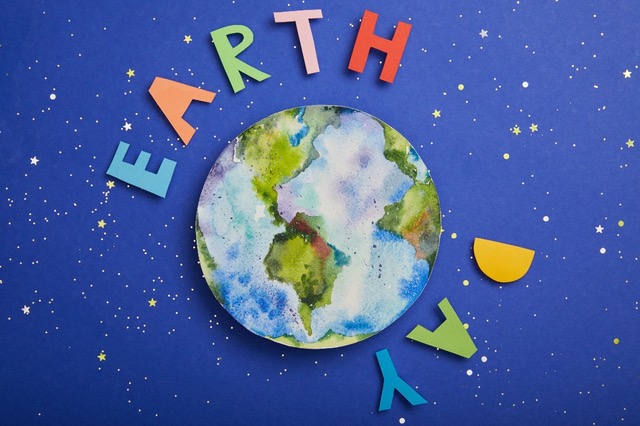This year’s Earth Day theme is Invest in our planet: What will you do?
A universal answer to “What will you do?” is to take steps to divest from fossil fuels—in our vehicles, in how we heat our homes, and in our investment portfolios. In other words, let’s consciously reduce our day-to-day demands on the planet.
Imagine that the planet is like your bank account. It contains principal which earns interest. In the case of Earth, the “principal” is the total of all its natural resources, including soil, vegetation, oceans, animals, water, air, and so on. The “interest” is Earth’s capability to regenerate or replace used resources each year. When we use more resources than the Earth can regenerate annually, just as with our saving or investment accounts, we start digging into the principal. Sadly, we are digging into that principal—and at the point or date when our withdrawals exceed the Earth’s capacity to make up the difference is when we “overshoot.”
Each of us has an “ecological footprint”, part of which is our “carbon footprint.” The sum total of the footprints of ALL Canadians determines our country’s “Overshoot Day.” This year Canada’s Overshoot Day was March 13th—third highest of all countries measured.
Our demands include energy, food, materials for shelter, clothing, transportation, entertainment, culture, recreation—all the things that our first world economy and lifestyle provide. But do we really need it all? What can we refuse, reduce, reuse or recycle? And how can we, as individuals, measure our progress in reducing our demands and the damage we are doing to the planet? One way is to measure your personal footprint and develop a personal—or household—action plan.
Professor Bill Rees, Professor Emeritus at the University of British Columbia, is the creator of the concept of “ecological footprint,” a quantitative tool that estimates humanity’s ecological impact. In 1969, along with then PhD student Mathis Wackernagel, he published Our Ecological Footprint. Now available in nine languages, this seminal work provided a framework to measure the amount of earth’s resources we use versus how much we have and how much can be regenerated.
Flash forward a half century and Mathis Wackernagel is now the CEO of the Global Footprint Network (GFN). GFN develops and promotes tools for advancing sustainability, including the ecological footprint and biocapacity. These tools aim to bring ecological limits to the center of decision-making, and are helpful when determining if a Cabinet or Council decision will take us closer to, or farther from, a sustainable future.
This is serious science; the Ontario Ministry of Natural Resources used these tools to calculate Ontario’s Ecological Footprint in 2005 and York University is GFN’s global university partner. These same tools are used to determine the “overshoot day” for each country, which are laid out in the following chart. 
The Earth is a finite body. Clearly, we can’t continue to use up the planet’s resources at this rate. The 2022 World Overshoot Day is July 29. Canada, as a robust consumer economy, can play a significant role in pushing that date back to a point later in the year.
To get started personally, you can calculate your personal footprint using the Global Footprint Calculator at https://www.footprintcalculator.org/home/en.
The Calculator is interesting and easy to use with good graphics. It will give you your global footprint and also your carbon footprint. It is not perfect, but will give you a good estimate and excellent starting point. (HINT: When you indicate your electricity use in the GFN calculator, think of it as energy and don’t forget natural gas usage. I have personally checked the GFN calculation of Tonnes of GHG gases used in our house against a recent energy audit of our home, and when you add natural gas to electricity in the GFN, the GFN number is close to the energy audit number.)
Once you have calculated your footprint, you can use GFN’s online tools and hints, as well as Sustainable Orillia’s “Tips” (https://sustainableorillia.ca/tips-tools/) to learn how you can reduce your footprints – both ecological and carbon. In this way you can make every day Earth Day and really make a difference!
Sustainable Orillia is preparing a “State of Sustainability” report for Orillia. Watch for it and for more information on how you can play a role in calculating Orillia’s footprint – coming later this year.
Stan Mathewson, President
Sustainable Orillia

